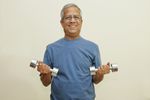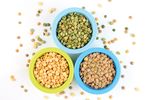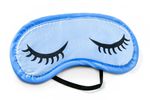CONVERSATIONS Volume 8, Issue 4 - Iowa Department of Public Health
←
→
Page content transcription
If your browser does not render page correctly, please read the page content below
FRESH CONVERSATIONS
Iowa Department of Public Health Volume 8, Issue 4
Page 2
Tips and tricks on
how to improve
your sleep!
Page 3
The connection between What benefit does
Diet, Exercise, and Sleep fiber have on your
sleep?
Did you know... Up to a third of your lifetime will be spent sleeping.
Raise your hand if you enjoy sleep. We can all agree Now what about exercise? A lack of sleep can make
that proper sleep is essential to our health but only you feel too tired to exercise as well. Okay, but
what’s the good news? People who engage in at
Z
when we get enough. How do you typically feel after
a night of poor sleep? Groggy? Unfocused? If so, you least 30 minutes of moderate physical activity can
are not out of the norm. Sleep deprivation leaves see a dramatic increase in their sleep quality,
your brain exhausted, so it can’t perform its duties especially that same night. Recognizing these
like eating and exercising. Almost one third of adults connections can help to improve your overall health,
get less than six hours per night, much less than the including your nutrition, physical activity, and sleep.
Z
recommended seven to nine hours. Without enough
sleep, people tend to overeat and choose unhealthy
foods. Those who are sleep deprived are more drawn According to the National
towards high calorie foods. Lack of sleep can also
Z
affect your hormones that control your hunger and
Sleep Foundation, most
fullness. This can cause excessive snacking and adults need 7 to 9 hours of
overeating. sleep per night.What is Insomnia?
Insomnia is a common sleep disorder characterized
by a persistent difficulty to fall or remain asleep
despite the opportunity to do so. Some may
experience excessive daytime sleepiness and other
cognitive impairments while they are awake that
directly stem from sleep loss. Older adults are at high
risk of insomnia as well as other sleep disorders such
Here are some tips to improve both
as sleep-disordered breathing or restless legs
your sleep quality and quantity. syndrome. Your sleep-wake cycles change and the
1. Try to have dinner earlier in the evening and quality of your sleep deteriorates as you age. Some
avoid snacking too close to bed. studies suggest that, beginning in middle age, the
2. Avoid caffeine later in the day. This can include average person loses 27 minutes of sleep per night
any stimulants such as coffee, energy drinks, for each subsequent decade.
soda, or tea. According to experts, a person with insomnia must
3. Move your body. Schedule regular exercise to report at least one of the following symptoms despite
improve your sleep. having enough time allotted for sleep and a relatively
4. Get some light. Try spending some time or comfortable sleep area:
exercising outdoors - exposure to natural light Difficulty falling or staying asleep
Repeated instances of waking up earlier than
during the day can help keep your body in
desired
sync.
Feelings of resistance about going to bed at a
5. Try to go to bed at the same time each night
reasonable time
and wake up at the same time each morning.
Difficulty sleeping without intervention from a
6. Refrain from using electronic devices right caregiver
before bed, including phones, computers, and
tablets.
7. Spend an hour before bed doing relaxing According to
activities. current
8. Focus on increasing fiber in your diet. estimates, 10-
Source: sleepfoundation.org/physical-health/diet-exercise-sleep
30% of adults
Are you having trouble sleeping at night live with
due to worrying about your next meal? Call insomnia.
2-1-1 for resources available in your area.
Be Active. Eat Healthy! Be sure to speak with
This month, I will take action by... your doctor for
concerns you may be
suffering from
insomnia.
Source: sleepfoundation.org/insomnia/older-adults
2
Fresh Conversations is developed by: Iowa Dept. of Public Health idph.iowa.gov/inn
Iowa Dept. on Aging iowaaging.govWhat’s fiber got to do, Women need 25
grams of fiber
got to do with it? per day; men
should target 38
Fiber has been shown to have so many health grams per day.
benefits such as lowering your cholesterol, blood
sugar management, and can help you lose or maintain
your weight. Researchers now have found increasing
your prebiotic fiber could improve your sleep quality as
well. What they found was when you lose sleep, you
can also throw off the balance of good bacteria in your
gut. Thankfully this also goes the opposite way,
Lentils, An Ageless
getting enough sleep helps to replenish the good
bacteria in your gut. They also found that eating
prebiotic-containing foods helps you to fall asleep
faster and have longer periods of restful sleep. Good
Legume
gut health has also been linked to strong immunity, Lentils are high in potassium, folate, and
weight loss, glowing skin, improved mental health, to fiber.
name a few. Could there be any more reasons to love Lentils contain prebiotics, which help feed the
fiber? probiotics that support gut health.
Add lentils to a pasta sauce to make it
Prebiotic Fiber Rich Foods heartier.
Toss into salads or fold into omelets before
Beans
Whole Grain Bread & Pasta cooking.
Onions
Walnuts Replace or supplement some of the meat in
Garlic
Bananas stews, chili, tacos, or casseroles with lentils.
Asparagus
Source: eatingwell.com/article/7677155/eating-more-fiber-could-help-you-get-a-better-nights-sleep/
Source: intermountainhealthcare.org/blogs/topics/live-well/2016/03/surprising-health-benefits-of-a-fiber-rich-diet/
Physical Activity and Sleep
One of the almost immediate benefits of physical activity is the
positive impact it has on your sleep. Being active makes it easier for
you to fall asleep and sleep more soundly at night. We know physical
activity literally tires you out, and that reduces the time it takes for
you to fall asleep at night. The activity doesn’t have to be vigorous
or at a certain time of the day. Just being active during the day, such
as taking a short walk, can make it easier to fall asleep at night.
Physical activity also helps you sleep better throughout the night.
The Physical Activity Guidelines for Americans show several improved sleep outcomes
associated with physical activity including: Increased sleep efficiency, sleep quality, deep
sleep, and reduced daytime sleepiness.
Information & resources for seniors with home & family questions
ISU AnswerLine 1-800-262-3804
3Lentil Tacos
Serves 6, 2 tacos per serving, $1.09 per serving
tablespoon
1 onion,
Ingredients:
dicedoil (canola or
Word Search
3 cups water
vegetable)
2 cloves garlic, diced (or ¼ teaspoon garlic
12 corn powder)
tortillas Lentils Caffeine Microbiome
onion,
1 cup diced
dried lentils 1 cup salsa Prebiotic Garlic Fatigue
2 cloves
½ garlic,
package (1.25diced (or ¼of 40%2less
ounces) cupssodium
lettuce,taco Fiber Electronics Exercise
teaspoon garlic powder)
seasoning shredded
Insomnia Pasta Walnuts
1 cups
3 cup dried lentils
waterrtillas
½ package (1.25 ounces) of 40% less sodium taco
seasoning
Instructions:
1. Heat the oil in a skillet over medium high heat.
2. Add the onion and garlic and cook for 4-6 minutes
or until they become soft and fragrant. Stir several
times during cooking. Add the lentils and
seasoning. Stir so that the seasoning is mixed in.
3. Slowly add the water and bring to a boil. Reduce
heat to medium low and cover. Cook for about 30
minutes or until the lentils are tender.
4. Uncover and cook for 5 minutes more until the
mixture has thickened and the liquid is absorbed.
Mash slightly with a fork.
5. Heat corn tortillas according to package directions.
6. Spread ¼ cup lentil mixture onto each tortilla.
7. Serve with salsa, cheese, and lettuce.
Freeze any lentil mixture leftovers up to 3 months.
Nutrition Information (per 2 tacos): 350 calories, 11 g fat,
480 mg sodium, 8 g fiber, 16 g protein, 51 g carbohydrates
This recipe is provided by Iowa State University Extension and Outreach. For more resources
like this, visit the Spend Smart. Eat Smart. website at http://spendsmart.extension.iastate.edu”.
Spend Smart. Eat Smart. is a registered trademark of Iowa State University.
4
Program developed by Iowa Department of Public Health in partnership with Iowa Department of
Human Services and Department on Aging. This material was funded by USDA's Supplemental
Nutrition Assistance Program (SNAP). This institution is an equal opportunity provider.You can also read



























































